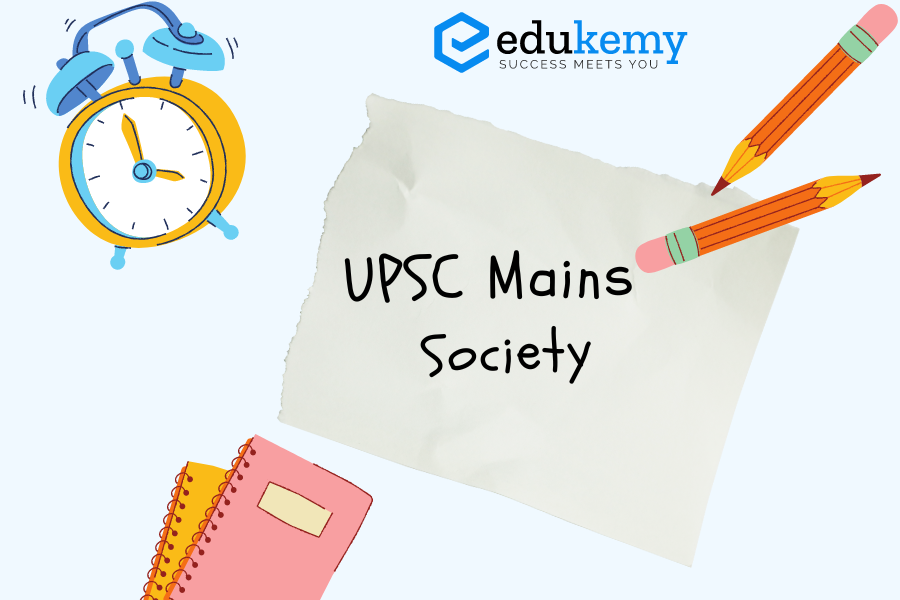
Introduction:
Development and welfare programs play a crucial role in advancing socioeconomic progress and uplifting marginalized segments of society. Despite their well-intentioned implementation, there is a perception that these initiatives may sometimes exhibit bias. Simultaneously, they are recognized as indispensable interventions to address existing societal disparities.
Body:
Development and Welfare Schemes as Potentially Discriminatory:
- Focused Approach: Criticism often revolves around reservation policies in education and government jobs, seen as discriminatory by non-reserved categories due to the perceived dilution of meritocracy.
- Resource Allocation: Programs like MGNREGA, while providing rural employment, face critique for potentially neglecting urban poverty alleviation.
- Potential for Misuse: Schemes like the PDS encounter issues such as corruption and grain diversion, hindering their intended assistance to economically weaker sections.
- Creation of Dependency: Some policies, providing free utilities to farmers, are criticized for fostering a dependency culture rather than encouraging self-reliance and sustainable resource management.
- Geographical Disparities: Initiatives like PM-DevINE for the North East may create a sense of discrimination in regions not receiving similar attention.
Counter-arguments:
Necessity for Targeted Approaches in Development and Welfare Schemes:
- Social Justice: Schemes like Beti Bachao, Beti Padhao address gender imbalances and promote equitable opportunities for girl children.
- Economic Equity: Initiatives like Pradhan Mantri Jan Dhan Yojana enhance economic equity by bringing more people into the formal banking sector.
- Health and Wellbeing: Ayushman Bharat ensures access to healthcare for the poor, promoting their health and overall well-being.
- Educational Equity: Schemes like the Mid Day Meal program not only encourage education but also combat malnutrition among children from disadvantaged sections.
- Infrastructure Development: Pradhan Mantri Gram Sadak Yojana connects rural areas with urban centers, facilitating economic opportunities for rural populations.
- Tribal Empowerment: VAN DHAN YOJANA aids tribal communities in economic self-sufficiency and market access for forest products.
- Protecting Culture and Traditions: Schemes like USTAAD support the handicraft industry among minority communities, preserving their culture and traditions.
Way Forward:
- Technology for Transparency: Implement technologies like blockchain for transparent and accountable systems, reducing bureaucracy and enhancing transparency in government operations.
- Multi-Sectoral Collaborations: Foster partnerships between the government and NGOs in various sectors, pooling resources and expertise for better outcomes.
- Effective Use of Citizen Charter: Employ redressal grievances and feedback mechanisms to improve scheme implementation and reduce discrimination.
- Decentralization: Encourage local governments’ involvement in policy formulation to tailor regional schemes, promoting efficacy and localized solutions.
- Entrepreneurship and Innovation: Support entrepreneurship and innovation through initiatives like the Startup India program to nurture self-sufficiency and economic growth.
- Sustainable Development: Integrate sustainable practices into welfare schemes, prioritizing environmental conservation and sustainable development.
Conclusion:
In conclusion, while addressing concerns of potential discrimination, it’s crucial to recognize the importance of targeted interventions for inclusivity and equity. The path forward involves collaboration, technology adoption, and transparency, aiming for a society where development is both inclusive and sustainable.

In case you still have your doubts, contact us on 9811333901.
For UPSC Prelims Resources, Click here
For Daily Updates and Study Material:
Join our Telegram Channel – Edukemy for IAS
- 1. Learn through Videos – here
- 2. Be Exam Ready by Practicing Daily MCQs – here
- 3. Daily Newsletter – Get all your Current Affairs Covered – here
- 4. Mains Answer Writing Practice – here

